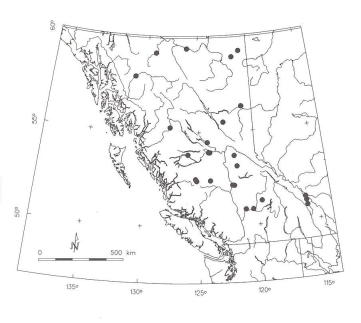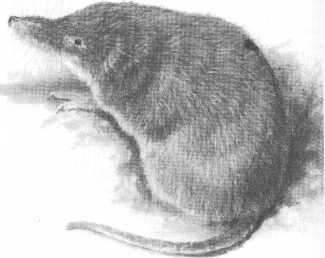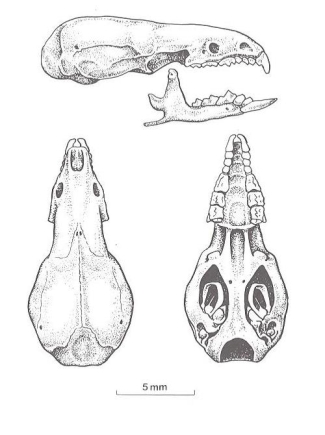Breeding data are scanty. In parts of the eastern United States, the young are born throughout the year, with a distinct peak in births from January to early March. The length of the breeding season in western Canada has not been determined. The number of litters a female Pygmy Shrew produces is also unknown, but it presumably has several, which is typical for North American shrews. Embryo counts range from three to nine, with six most common. In British Columbia, nursing females have been found in June and a pregnant female with nine well developed embryos was captured on 21 June.
|
The Pygmy Shrew's diet has been studied in several wild populations, which seem to prefer small invertebrates less than five millimetres long. Prey items identified in stomachs from a population in New Brunswick were mostly insect larvae (67.9 per cent), adult insects (22.0 per cent) and spiders (10.1 per cent). The insect larvae were predominantly flies, moths and butterflies; most of the adult insects were beetles. In Michigan, ants accounted for 45.5 per cent of the prey types, with other hymenoptera, spiders, beetles, and moth or butterfly larvae making up the remainder of the diet. It has been estimated that a Pygmy Shrew can consume 100 Larch Sawfly larvae per day. All studies indicated that larger prey, such as earthworms, snails and slugs, are not eaten; they may be too large for Pygmy Shrews to handle. Evidently Jack Pine seeds are consumed in winter. Leslie Prince found that captive Pygmy Shrews ate Larch Sawfly larvae, grasshoppers, house flies, crane flies and the carcasses of various small mammals. They killed grasshoppers by biting their heads and abdomens, then ate only the soft organs and discarded the hard exoskeleton. They entirely consumed smaller prey such as flies.
|
Estimates of population density for the Pygmy Shrew range from only 0.5 to 1.2 animals per hectare. These estimates are probably low because conventional trapping methods were used, but they do suggest that the Pygmy Shrew is uncommon in most communities. In British Columbia, the dominant shrews in communities where the Pygmy Shrew has been found are the Vagrant Shrew, Dusky Shrew and Common Shrew.
A captive Pygmy Shrew was active for 239 minutes a day in brief periods, about three minutes each. It was active throughout the day, but mostly at night. The Pygmy Shrew is an adept climber. A captive shrew climbed the sides of its cage and hung from the wire mesh on the top.
During a 14-month study in Kentucky, George Feldhamer and colleagues caught no Pygmy Shrews from June to August, although they caught many throughout the rest of the year. They speculated that this species was forced underground in summer dry spells.
The life span of a Pygmy Shrew is 16 to 17 months. Known predators are garter snakes, hawks and domestic cats.
|
|


